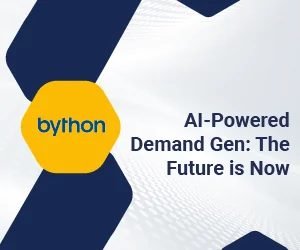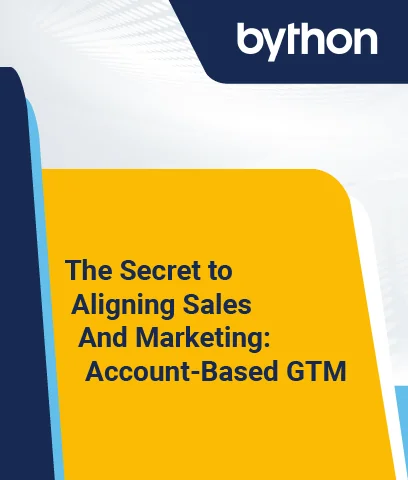Artificial intelligence (AI) in HR has tremendous potential. Repetitive, manual processes and tedious paperwork traditionally characterized the HR function. AI in HR unlocks the possibility of intelligent automation, which is why 50% of HR leaders are increasingly prioritizing AI adoption. Read on to know the ten areas where this technology can make the most difference.
1. Job Description Optimization
In traditional HR practices, crafting job descriptions often involves subjective language and may inadvertently include biases. Similarly worded, job ads also take enormous time to craft manually. AI can revolutionize this process by analyzing language patterns, suggesting inclusive language, and optimizing job descriptions for better visibility on job boards and search engines.
These tools leverage natural language processing (NLP) to understand the semantics of job descriptions. They can identify – and flag — biased language, gender-coded terms, or other exclusions that might deter qualified candidates. Generative AI streamlines the process further, generating job descriptions from scratch powered by enterprise-grade AI model training.
#ProTip: Use AI platforms to analyze your job descriptions and highlight recommendations for improvement, ensuring inclusivity and better search visibility in 2024.
2. Candidate Screening
Candidate screening involves a manual review of resumes, cover letters, and applications, which can be time-consuming and prone to human bias. AI transforms this process by automating resume parsing and screening.
AI-driven applicant tracking systems (ATS) utilize machine learning algorithms to analyze resumes, identify relevant keywords, and match candidate qualifications against job requirements. Some even have chatbots to conduct preliminary interviews and cross-check references. These systems can rank candidates based on their qualifications, experience, skills, and other criteria set by the hiring team.
#ProTip: Automating candidate screening can reduce time-to-hire and ensure fair and unbiased candidate evaluation.
3. Employee Onboarding
Employee onboarding is a vital process that sets the tone for new hires’ experiences within the organization. Traditional onboarding methods often involve manual paperwork, repetitive tasks, and limited support for new employees.
In contrast, AI chatbots and onboarding platforms offer personalized guidance to new hires. They can answer frequently asked questions, provide relevant resources, and facilitate the completion of onboarding paperwork. These tools can integrate with HR systems to automate administrative tasks — such as setting up email accounts, assigning access permissions, and scheduling orientation sessions. As a result, you can enhance the new hire experience and improve employee engagement.
#ProTip: AI will also free up valuable time to focus on more strategic initiatives, such as building relationships with new employees.
4. Performance Management
You can leverage artificial intelligence to automate various aspects of performance management within your organization. AI systems analyze performance data, feedback, and other relevant metrics to provide actionable insights and facilitate informed decision-making processes.
You can also implement predictive analytics models by integrating AI with your performance database. This helps forecast future performance and identify potential areas for improvement or intervention, highlighting future leaders who can be groomed for succession planning.
The benefit of AI is that it lets you gather and analyze data from multiple sources—for example, employee evaluations, project outcomes, and peer feedback—to generate comprehensive (and objective) evaluations. With natural language understanding (NLU), you can extract meaningful insights from qualitative feedback and open-ended answers, adding to your holistic understanding of performance and engagement levels.
#ProTip: You can also configure these tools to send automated notifications and alerts so that there is a continuous feedback loop between managers and employees.
5. Learning and Development
You can harness the power of AI to enhance learning and development initiatives within your organization. AI-driven learning management systems (LMS) offer personalized learning experiences tailored to individual employee preferences, learning styles, and skill gaps.
They analyze individualized data, skills assessments, and career aspirations to recommend relevant training modules, courses, and development opportunities to each employee. You can also track employee progress in real-time. AI platforms will dynamically monitor learning outcomes and adapt learning pathways based on evolving skill requirements and organizational goals. This takes minimal manual effort, even as you continue to support employee skill development and knowledge acquisition.
#ProTip: AI-powered content curation tools enable you to curate and deliver engaging learning materials, including videos, articles, and interactive modules.
6. Employee Engagement Surveys
Survey automation is another high-potential area where AI can unlock sizable gains. In 2024, most survey platforms utilize advanced AI algorithms to analyze response patterns, sentiment, and engagement trends.
NLP techniques can extract meaning and sentiment from open-ended responses, giving deeper insights into employee perceptions and attitudes. It can categorize employee statements by topic (e.g., hybrid work) or sentiment (e.g., positive, negative, or neutral). Deep learning models such as recurrent neural networks (RNNs) or transformer-based architectures like BERT are getting better and better at extracting sentiment and emotional tonality from survey responses.
#ProTip: You can also integrate HR automation systems with real-time dashboarding and reporting using technologies like Elasticsearch and Kibana or Tableau. This allows you to visualize survey results and track engagement metrics over time.
7. Payroll and Benefits Administration
AI can revolutionize compensation and total rewards processes within your organization. It performs complex calculations, tax deductions, and benefits management while ensuring compliance with regulatory requirements.
Besides these routine tasks, ML can analyze historical payroll data to detect patterns, anomalies, and potential errors. You promptly identify discrepancies and mitigate risks (e.g., labor law non-compliance) before they snowball.
Another area where AI can help is document management.
Optical character recognition (OCR), an AI technique, extracts relevant data from documents such as tax forms, invoices, and employee records. This reduces manual data entry errors and eliminates mundane work. Further, NLU ensures accurate interpretation and compliance with applicable laws and regulations.
#ProTip: Integrating AI-driven payroll platforms with HRIS systems and financial software can almost guarantee 100% data accuracy and integrity throughout the payroll process.
8. Time and Attendance Management
AI intervention can greatly benefit employee time-tracking. For example, facial recognition technology, biometric scanners, and GPS let you accurately record and monitor employee attendance.
ML algorithms analyze attendance data to identify worrying signs of overworking or tardiness. By forecasting future attendance trends, you can proactively address underlying issues like burnout or stress.
This practice of HR automation also includes workforce scheduling. AI can optimize shift assignments, workload distribution, and resource allocation based on employee availability, skill sets, and business needs. Real-time monitoring alerts you about employee attendance in real-time so you can maintain shift productivity.
#ProTip: Ideally, time and attendance workflows should be connected to payroll so there is end-to-end automation, and the AI can notify human stakeholders if their intervention is ever needed.
9. Employee Exit Management
When employees leave, it’s important to understand why. AI tools help us gather insights from exit interviews and departure data. By looking at past data, such as who left and when AI can predict if others might leave in the future and help you stem employee attrition.
NLP algorithms analyze exit interview transcripts, parsing through textual data to identify recurring themes, sentiments, and concerns expressed by departing employees.
Moreover, topic modeling techniques, including Latent Dirichlet Allocation (LDA) or Probabilistic Latent Semantic Analysis (pLSA), can be applied to uncover latent themes and topics within exit interview narratives. By automatically identifying clusters of related keywords and phrases, you gain deeper insights into the underlying reasons for employee turnover.
#ProTip: These systems’ data can power churn risk predictors for future employees, especially your top talent.
10. Compliance and Risk Management
HR compliance processes rely on AI technologies to navigate complex regulatory landscapes and mitigate risks effectively. AI models leverage advanced statistical techniques and machine learning algorithms to quantify and evaluate compliance risks across diverse domains—for example, low productivity, which can lead to profits dipping below the acceptable threshold.
AI can read through legal documents, contracts, and industry-specific regulations in a fraction of the time required by humans. By processing vast amounts of data, AI algorithms help HR extract obligations and standards to ensure the organization remains compliant. Further, algorithmic models can analyze historical data, market trends, and external factors to identify potential threats and vulnerabilities to your organization.
#ProTip: AI can even automate routine audits and ensure a data trail for independent auditors to verify.
Strengthening Data Infrastructure: The Foundations for AI-led HR Automation
CHROs and HR managers need to pay attention to their data infrastructure to harness the power of artificial intelligence. This spans API-connected HR systems, cloud environments, and data pipelines. Based on a strong bedrock of data capabilities, AI HR tools can recommend and execute informed actions that lead to the best possible outcomes.







